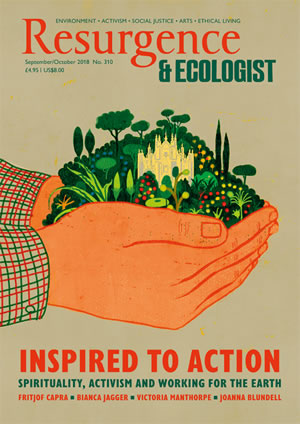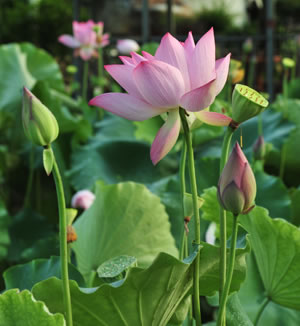“Intimacy with the planet in its wonder and beauty and the full depth of its meaning is what enables an integral human relationship with the planet to function. It is the only possibility for humans to attain their true flourishing while honoring the other modes of earthly being. The fulfillment of the Earth community is to be caught up in the grandeur of existence itself and in admiration of those mysterious powers whence all this has emerged.” – Thomas Berry
How do we maintain an intimacy with the Earth and the natural world? How do we keep a depth and freshness in ourselves that allows us, even in a busy city, to be fully aware of Nature’s gifts of sustenance, of the gentle caress of leaves, of birdsong, of rolling clouds?
Mystical traditions, since antiquity, encourage practitioners to become intimate with the benevolence and generosity of our universe. The Sufi mystical tradition, for example, speaks of an “Earth of True Vision”, implying that our depth of perception is necessary to see and remember the Earth that is our home and nurturer. Sufi insights can be helpful to all, as a reminder of ways to maintain our natural capacity of deep perception so we can be of greater service to the safekeeping of our Earth.
Creative intelligence and harmony with the natural world
Sufi teacher Pir Vilayat Inayat Khan (1916–2004) emphasises that continually tuning ourselves to our own inherent clarity, creativity and sense of possibility is vital in meeting the ecological challenges we now face. This is vital for anyone who undertakes a path of social action, as it is easy to be overwhelmed by the severity of the problems around us. Pir Vilayat suggests that we simply use the natural world as our teacher: Nature does not retract from roadblocks to evolution, but instead experiments with novel behaviour and new structures to meet difficult conditions. When something is not working, Nature unlearns a certain behaviour and tries another. In the same way, we are always being challenged to unlearn: for example, to suspend habitual reactions to circumstances and thereby allow creative alternatives to emerge. In this way, Sufis use meditation as the vehicle for unlearning, likening it to the work of a farmer who must clear a field of rocks and stubble before tender seeds, or in this case new possibilities, can spring up.
Meditation, instead of being an obscurity and an abstraction, can best be understood as a simple tool for appreciating our world and aligning with Nature’s rhythms and imagination. Explaining this further, physicist David Bohm (1918–94) emphasises that meditation reveals a sense of the interconnectedness and an underlying “implicate order” behind physical reality. He suggests that from this experience arises an informed creativity that can help bring discernment and effective action to the world.
Making a difference
Given the scale and intensity of the issues we face, can an individual’s meditation and other pathways of cultivating fresh and creative perception really make a difference in our world? Is it true that, as the Persian poet Jalālu’d-dīn Rūmī exclaims, “The clear bead at the centre changes everything”?
Sufis accent that our collective human evolution is “worked out” within the details of our individual lives. In this regard, Sufi teacher Hazrat Inayat Khan observes that our attention to our planet’s own intelligence is opened via meditation, and that such an opening has a profound effect:
“The collective working of many minds as one single idea, and the activity of the whole world, are governed by the intelligence of the planet, and unlock the doors opening up into a glorious future.”
C.G. Jung identifies a similar principle in his studies of the alchemy of human consciousness, describing a contagious action of multiplicatio. He characterises this as akin to a homeopathic-renewing power within a tincture, the effect of which spreads dramatically. A parallel to this multiplicatio, operating in the psyche, is found in the natural world. For example, biologist Lynn Margulis observes that, by the profound interconnectedness within all living matter, a change in the genetic structure of a single microbe will, within a few years, affect the entire gene pool of all life forms on our planet.
Extending beyond the Sufi tradition, Indigenous teachers and other contemplatives have recognised Nature to be a sacred manuscript capable of providing the guidance that we need to survive and flourish. Many have also emphasised that our individual perception and vision play a critical role in our evolution.
Clear and luminous perception obtained via a deep practice of reflection or meditation sparks creativity and opens new possibilities. Such perception is a significant human contribution to the flourishing and vitality of our Earth. It may help us to realise and be more responsive to what Thomas Berry called Earth’s “radiant intelligibility”, and better serve and safeguard our natural world.







